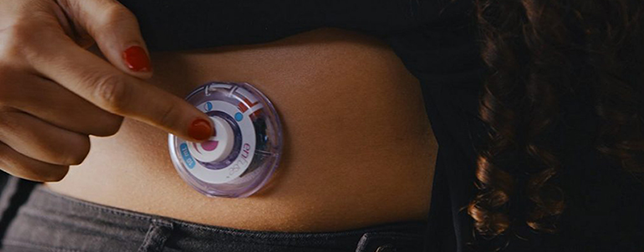Enable Injections, a Cincinnati, Ohio-based startup has developed a device called enFuse that allows patients to self-administer biologics with ease.
While most of the time we take our medicines orally, other types of medications, such as biologics, must be injected. Biologics are products such as vaccines, allergenics, blood and blood components, somatic cells, gene therapy etc. Biologics can sometimes be difficult to inject; they require significant force and injection time to administer, causing more discomfort. Patients needing biologics typically must visit a clinic to have them administered intravenously by a professional.
Read more How Smart Pills Could Revolutionize Healthcare
The brilliantly designed enFuse makes administering injections a simple task. The new wearable, which is a large volume wearable injector (LVWI), allows users to adhere it to their abdomen and automatically inject an amount of medication between 4 to 50 mL with just a press of a button.
How does enFuse work?
To start using the device, the user must fill the balloon-like reservoir with drugs, and the company, Enable Injections, has developed versions of enFuse that are compatible both with industry-standard pre-filled syringes or vial closure devices.

The patient then needs to push a vial into the transfer unit, which empties the contents using a tiny canister of pressurized CO2, or he/she can attach a syringe and fill the enFuse with the syringe’s plunger. In either case, there’s a fill gauge on the enFuse that shows how much drug is inside it. Also, by nature of the filling system, the drug is passively warmed to room temperature and mixed as it travels from the vial or syringe to the enFuse’s reservoir, making it ready to inject once transferred.
Read more Innovative Bracelet Will Monitor Your Blood Pressure 24 Hours a Day
The patient will then need to remove enFuse from the transfer housing, stick it to his/her abdomen, remove the safety tab, and push the button. A small needle then automatically starts to administer the medication at a controlled flow rate.
This low-profile device can be easily worn under clothing. The injection is less painful than a mosquito bite, so the patient can go about their usual work while wearing it. If at any time, the user feels too much pain due to flow of the drug, he/she can press the button to stop the injection.
When all the drug has been injected, the button pops back up with an audible click and the needle is retracted, notifying the user that all of the medication has been injected. The user can then simply remove the device.
The device has already gone through dozens of human factors studies to perfect its design. Drug manufacturer CSL Behring will conduct the first clinical study in June.












